#Polyodontidae
Text
Do you ever just think about sturddlefish? I do

#Sturddlefish#Sturgeon#Paddlefish#Fish#Today I bring you this. Tomorrow? Who knows#How tf do you tag stuff so people will actually see it#Chordata#Actinopterygii#Acipenseriformes#Acipenseridae#Polyodontidae#Silly#Not a reblog#Aquatic
1K notes
·
View notes
Text

microscopic image of larval paddlefish
26 notes
·
View notes
Text
Easily my most popular post was about paddlefish, so this Wet Beast Wednesday it's time to give them their moment in the sun. Paddlefish are members of the family Polyodontidae and one of only two surviving members of the order Acipenseriformes, the other being sturgeons. The Acipenseriformes are one of the oldest lineages of ray-finned fish and diverged from the ancestors of all other modern ray-finned fish around 300 millions years ago. While paddlefish have been around since the Cretaceous period, there is only one living species, the American paddlefish (Polyodon spathula). Another modern species is the Chinese paddlefish (Psephurus gladius), but the last sighting of one was in 2003 and they were officially declared extinct in 2022. In this post, unless I specify otherwise everything I say will be referring to the American paddlefish.

(image: either an American paddlefish or a basking shark that got its nose caught in a hydraulic press)
Paddlefish are named for their very long rostrums which are packed full of electrorecepting organs called the ampullae of Lorenzini used to sense electric fiends in the water. The ampullae are not only on the rostrum, but also on the head and large skin flaps that extend from the operculum (gill cover). They are so sensitive that paddlefish are able to sense the movement of individual body parts of zooplankton. Paddlefish use their rostrums to detect their prey, which consists almost entirely of zooplankton. They are ream suspension feeders, swimming toward swarms of zooplankton with their mouths open. As the water passes through the gills, gill rakers filter out the zooplankton, which is then swallowed. Other fish that use this feeding method include basking sharks. While the rostrum is the primary method of prey detection, other ampullae on the head and operculum flap allow the fish to still effectively find food even if the rostrum is damaged or destroyed. When working fish fish on the Mississippi I caught multiple paddlefish who lost their rostrums to propeller strikes and were still doing fine. Electroreception is their main sense, with their eyesight being extremely poor.

(image: the skeletal structure of the rostrum)
As chordates, paddlefish have a notochord that runs from the head down the body. In most modern chordates, the notochord is only present in the embryo and is lost during development. This is not the case for paddlefish, who retain their notochord into adulthood, where is acts as a soft spine. While paddlefish (and their sturgeon cousins) are bony fish, they have lost most of the bone and now have skeletons composed almost entirely of cartilage. It is for this reason that early taxonomists initially miscategorized paddlefish as freshwater sharks. To be fair, they do look a lot like miniature basking sharks. Who crossbred with spoons. They also lost their scales and have smooth, easily damaged skin instead. Their skin is so easily damaged that just being caught in nets can leave scars. Paddlefish are large and long-lived. The American species reaches an average of 1.5 m (5 ft) in length, with the rostrum making up a third of that, and a weight of 27 kg (60 lbs). The largest recorded specimen was 2.16 m (7 ft 1 in) and an estimated 90 kg (198 lbs). Despite being one of the largest American freshwater fish, they paled in comparison to the Chinese species, which could reach 3 m (9.8 ft) and 500 kg (1,100 lbs). The largest Chinese paddlefish on record was 7 m (23 ft) long and was estimated to weigh "a few thousand pounds". The Chinese paddlefish also preferred larger prey, feeding largely on small fish and crustaceans. American paddlefish live an average of 5 to 8 years, but in the right circumstances can live up to 60 years, with females generally living longer. The Chinese paddlefish had an estimated average lifespan of 29-38 years. In both species, it is believed that human activity drastically reduced their average lifespans.
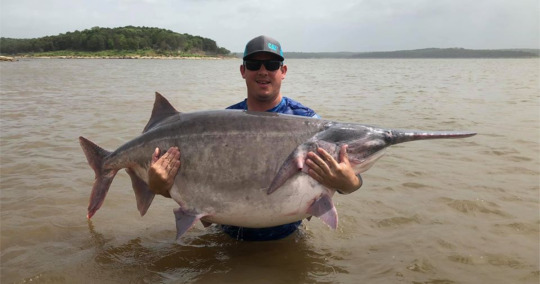
(image: an absolute unit of an American paddlefish)
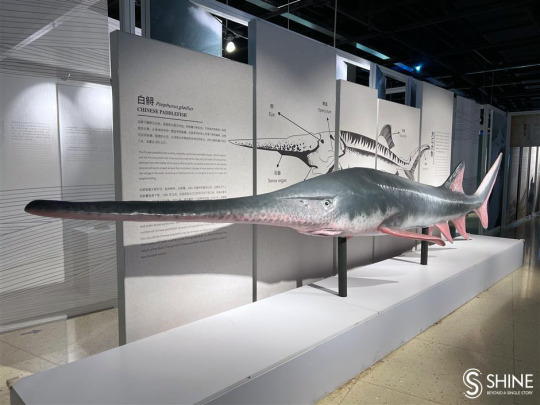
(image: a reconstruction of a Chinese paddlefish from the Shanghai Science and Technology Museum)
Paddlefish travel upriver to spawn in spring. They prefer to span on shallow gravel bars that would be exposed to air if not for spring rainfall and snow melt. Because they require very specific conditions to spawn, spawning rarely occurs every year. Every 4-5 years is more common. Paddlefish are broadcast spawners, with both males and females releasing gametes into the water column. Fertilized eggs are negatively buoyant and sticky. They will sink to the bottom and stick to the gravel. Once hatched, larvae will be swept down river to develop in deep pools. They are born without rostrums, which start to grow almost immediately. Paddlefish mature late, with females becoming sexually mature between 7 and 10 years of age, with a few not maturing until as late as 16-18 years. Human activity is resulting in many individuals dying before becoming sexually mature. American paddlefish are cross-fertile with the Russian sturgeon (Acipenser gueldenstaedtii), producing a hybrid offspring known as the sturddlefish despite being separated by the Atlantic ocean and 184 million years of evolution. This was discovered by accident when scientists introduced paddlefish sperm too sturgeon eggs as a control group for an experiment. I made a post on the sturddlefish which you can read here.

(image: three larval paddlefish of different ages)
American paddlefish are classified as vulnerable by the IUCN. They are native to the Mississippi river basin that encompasses much of the midwest and south of the United States, but their range used to be larger, reaching into Lake Huron, the Northeastern U.S. and parts of Canada. This reduction of native range is due largely to human activity, mostly overfishing and habitat loss. Zebra mussels, an invasive species, are a major competition for paddlefish as theybith feed on zooplankton. Reintroduction programs have begun in some of the states they were extirpated from, and they have been introduced to China, Cuba, and multiple countries in Europe for use in fishing and caviar production. 13 states allow for sport fishing of paddlefish, some of them relying on restocking to maintain a population for anglers. Paddlefish meat is edible and their eggs can be used for caviar. Paddlefish can be raised in captivity, but must will not spawn in captivity and so establishing captive populations requires gonad extraction and artificial insemination. Poaching of wild paddlefish for their eggs is an ongoing problem. The extinction of the Chinese paddlefish is believed to be the result of overexploitation and habitat loss.
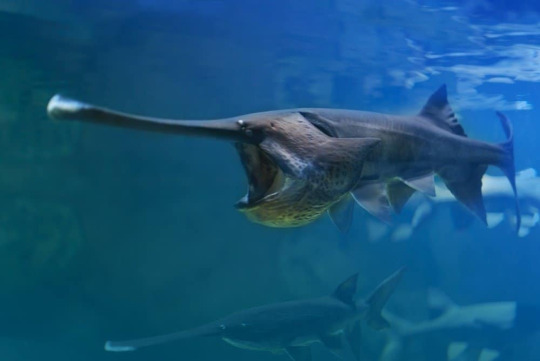
(image: a paddlefish with its mouth open)
#wet beast wednesday#biology#zoology#fish#ecology#fishblr#freshwater biology#freshwater fish#aquatic biology#paddlefish#american paddlefish#chinese paddlefish#animal facts
518 notes
·
View notes
Note
Do you have any cool facts about Missouri wildlife?
I'd love to share something with my Midwestern friends, and thank you for always updating this blog!
I don't know if i have any Missouri animal facts per se... but I can share some of the state symbols with everyone.
We moved around a lot when we first came to the U.S. and we lived briefly in Kansas City. I have great memories of going to the Ozarks at Christmas time (near Lake of the Ozarks). I specifically remember following woodpeckers and deer around the forest in the snow.
SOME MISSOURI STATE SYMBOLS:
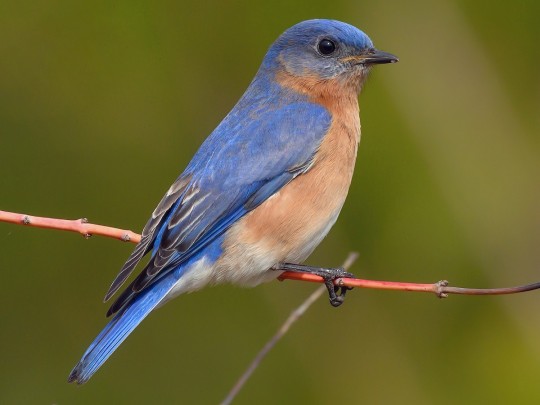
STATE BIRD: Eastern Bluebird (Sialia sialis), family Turdidae, order Passeriformes, found across much of the central and Eastern U.S., SE Canada, and NW Mexico
Changes in land use lead to drastic declines in Eastern Bluebirds after the early 1900s. They have recovered in many places, due to "bluebird trails", reestablishing appropriate habitat and nest box campaigns for public and private property.
Find out more: NestWatch | Eastern Bluebird - NestWatch
Blue birds are in the thrush family, Turdidae, along with American Robins.
They eat mainly worms, insects, and other small invertebrates (but also take berries for part of the year).
Bluebirds are cavity nesters, nesting in tree holes usually, but will readily take to properly constructed and placed nest boxes.
Males (pictured) are brighter blue, and females are a more muted and faded blue or bluish gray.
photograph by Keith Kennedy

STATE AQUATIC ANIMAL: American Paddlefish (Polyodon spathula), family Polyodontidae, order Acipenseriformes, found in various parts of the Mississippi River basin
This species is the only member of this family that still exists. They are most closely related to sturgeons. This order, Acipenseriformes, is considered one of the most evolutionarily primitive groups of ray finned fishes.
They do not have scales, and their skeleton is mostly cartilaginous.
They are filter feeders. Their heads and rostrums are covered with thousands of sensory receptors, which help them locate zooplankton swarms.
They are considered "vulnerable" due to overfishing, habitat degradation and destruction, and pollution.
photograph via: US Fish & Wildlife Service
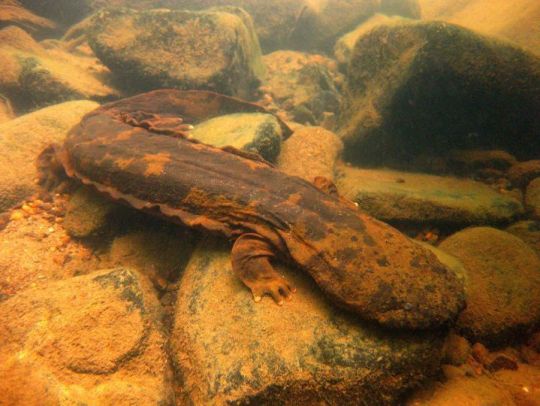
STATE ENDANGERED ANIMAL: Eastern Hellbender (Cryptobranchus alleganiensis), family Cryptobranchidae, eastern United States
The largest salamander in the Americas, it grows to a total maximum length of up to 40 cm (15.7 in).
Though nationally it is considered to be just "vulnerable", in some states (like Missouri), it is "endangered".
photograph by Mark Tegges

STATE REPTILE: Three-toed Box Turtle (Terrapene triunguis), family Emydidae, found in the South-central and Southeastern U.S.
This specie shas been considered to be a subspecies of the Eastern Box Turtle, T. carolina (and still is by some herpetologists).
These turtles are terrestrial, but are not closely related to tortoises. They are in the same family as aquatic sliders, pond turtles, cooters, map turtles, and painted turtles.
photograph by Noppadol Paothong
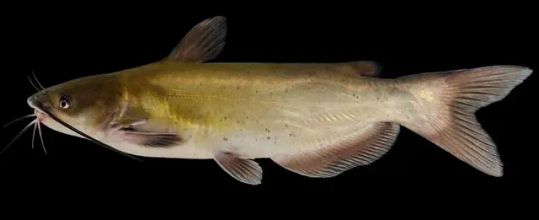
STATE FISH: Channel Catfish (Ictalurus punctatus), family Ictaluridae, order Siluriformes, found in freshwater habitats in the eastern and southern US, southern Canada, and northern Mexico
They are widely caught, and have been introduced into waterways in other parts of North America and around the world. (In some places they are considered an invasive species).
photograph via: Missouri Dept. of Conservation

photograph by Brian.gratwicke
#Acipenseriformes#paddlefish#fish#ichthyology#box turtle turtle reptile#herpetology#bluebird#thrush#bird#ornithology#north america#hellbender#salamander#amphibian#animals#nature#catfish
177 notes
·
View notes
Photo

The Chinese paddlefish (Psephurus gladius; simplified Chinese: 白鲟; traditional Chinese: 白鱘; pinyin: báixún: literal translation: "white sturgeon"), also known as the Chinese swordfish, is an extinct species of fish that was formerly native to the Yangtze and Yellow River basins in China. With records of specimens over 3 metres (9.8 feet) and possibly 7 metres (23 feet) in length, it was one of the largest species of freshwater fish. It was the only species in the genus Psephurus and one of two recent species of paddlefish (Polyodontidae), the other being the American paddlefish (Polyodon spathula). It was an anadromous species, meaning that it spent part of its adult life at sea, while migrating upriver to spawn.
The Chinese paddlefish was officially declared extinct in 2022, with an estimated time of extinction to be by 2005, and no later than 2010, although it had become functionally extinct by 1993.[1][4] The main cause of its extinction was the construction of the Gezhouba and Three Gorges dams, causing population fragmentation and blocking the anadromous spawning migration. Overfishing also played a significant role in its demise. Fishing of the Chinese paddlefish dates back centuries, with annual harvests reaching 25 tons by the 1970s. Since the 1990s, the species was officially listed by the International Union for Conservation of Nature (IUCN) as critically endangered, and was last seen alive in 2003. A 2019 paper including scientists from the Yangtze River Fisheries Research Institute found the species to be extinct.[4] It was unanimously agreed to be extinct by the Species Survival Commission Sturgeon Specialist Group of the IUCN on 15 September 2019.[5] It was formally listed as extinct by the IUCN in July 2022.
https://en.wikipedia.org/wiki/Chinese_paddlefish
1 note
·
View note
Photo

The long goodbye: Study declares ancient Chinese paddlefish extinct
In 2003, researchers from the Chinese Academy of Fishery Sciences captured, tagged and released a female Chinese paddlefish (Psephurus gladius) that had accidentally been caught in the Yangtze River. In just 12 hours, all communication with the fish tag was lost. That was the last time scientists saw a living Chinese paddlefish.
The same team of researchers, led by Qiwei Wei, assessed the species as critically endangered (possibly extinct) for the IUCN Red List in 2009. But the Chinese paddlefish, listed among the world’s largest freshwater fish species with lengths reaching up to 7 meters (23 feet), likely went extinct before that assessment, a new study concludes. In fact, by 1993, the species was most probably functionally extinct; that is, it was unable to reproduce successfully and its population was too small to be significant in any manner, researchers have now determined.
The Chinese paddlefish is, or rather was, a unique species. It was one of only two living species of paddlefish, the other being the American paddlefish (Polyodon spathula), part of an ancient group of fish known to have existed since the Lower Jurassic, 200 million years ago. It was also the only species in the genus Psephurus.
“Given that the Chinese paddlefish was one of the two extant species of paddlefishes, loss of such unique and charismatic megafauna representative of freshwater ecosystems is a reprehensible and an irreparable loss,” Wei, a professor at the Chinese Academy of Fishery Sciences and co-author of the study, told Mongabay.
The Chinese paddlefish wasn’t always rare. Historically it occurred across many large rivers that flow into the West Pacific, but since the 1950s it was seen mostly in the Yangtze River, researchers say. There, too, its numbers declined dramatically due to overfishing — estimates put harvests at around 25 tonnes of paddlefish per year during the 1970s — and fragmentation of its riverine habitat. A major death knell came with the construction of the first dam on the Yangtze River, the Gezhouba Dam, which blocked the routes of most migratory fish in the river, including the Chinese paddlefish. The dam split the fish’s population into two isolated groups, and prevented adult fish from moving upstream to spawn and young fish from swimming to downstream feeding areas.
#Chinese Paddlefish#Psephurus gladius#Psephurus#Polyodontidae#Acipenseriformes#Actinopterygii#Osteichthyes#fish#extinction#conservation#dams#biodiversity#China
51 notes
·
View notes
Link
Meet the sturddlefish: a new species of fish accidentally created by scientists in Hungary. It's an unusual mix of two endangered species, the American Paddlefish and the Russian Sturgeon.
According to a study published in the journal Genes, researchers at Hungary's National Agricultural Research and Innovation Centre, Research Institute for Fisheries and Aquaculture said that they were not trying to create a new fish when the sturddlefish was born. Rather, they just wanted to know if the two species could be bred in captivity — and were shocked when the resulting fish actually grew to adulthood.
"This was the first successful hybridization between these two species and between members of the family Acipenseridae and Polyodontidae," researchers wrote.
3 notes
·
View notes
Video
Ten Largest & Biggest Freshwater Fishes in THE WORLD
#1 : Beluga Sturgeon

The beluga sturgeon in Russia is the largest freshwater fish in the world. This massive fish can reach over 15 feet long and weigh upwards of 2,500 pounds.These fish also have a long lifespan, living to 100 years and older. Like most sturgeons, the beluga is anadromous, migrating upstream in rivers to spawn.
Scientific name: Huso huso
#2 : White Sturgeon
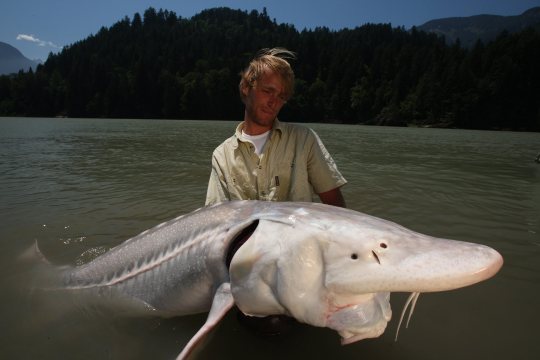
The white surgeon is the biggest freshwater fish in North America. It can reach 20 feet long and weigh up to 1,500 pounds. These large fish can live in fresh or salt water and can be found in the Western United States and Canada.There existence on this Earth may soon end. There are only an estimated 500 of them left.
Scientific name: Acipenser transmontanus
#3 : Giant Freshwater Stingray

The giant freshwater stingray is a species of stingray in the family Dasyatidae. It is found in large rivers and estuaries in Indochina and Borneo, though historically it may have been more widely distributed in South and Southeast Asia. Giant freshwater stingray can reach 10 feet long and weigh up to 1,300 pounds.
Scientific name: Himantura chaophraya
Fish experts believe the giant stingray, such as this one in Cambodia's Mekong River, is the largest freshwater species on Earth.
#4 : Mekong giant catfish

The Mekong giant catfish, is a large, critically endangered species of catfish in the shark catfish family, native to the Mekong basin in Southeast Asia and adjacent China. It can grow up to 10 feet long and weigh upwards of 600 pounds.
Scientific name: Pangasianodon gigas
#5 : Alligator Gar
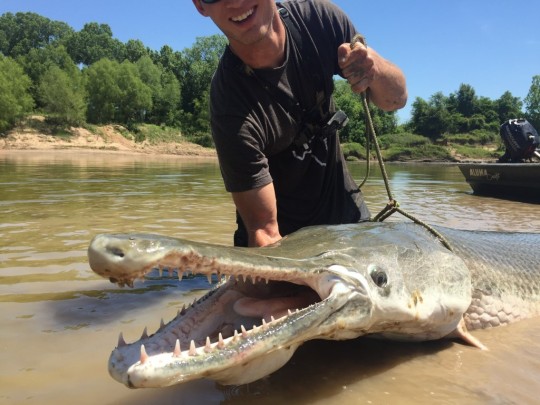
The alligator gar may resemble an alligator when you look at its mouth, but rest assured, it is a fish. it can reach 10 feet long and 350 pounds. Gars are often referred to as "primitive fishes", or "living fossils" because they have retained some morphological characteristics of their earliest ancestors. The fossil record traces its existence back to the Early Cretaceous over a hundred million years ago.
Scientific name: Atractosteus spatula
#6 : Arapaima

Arapaima live in the Amazon River basin of South America and can reach 8 feet long and 330 pounds. Arapaima is an obligate air-breather and needs to come to the surface regularly to gulp air.
Scientific name: Arapaima gigas
#7 : Bull Shark
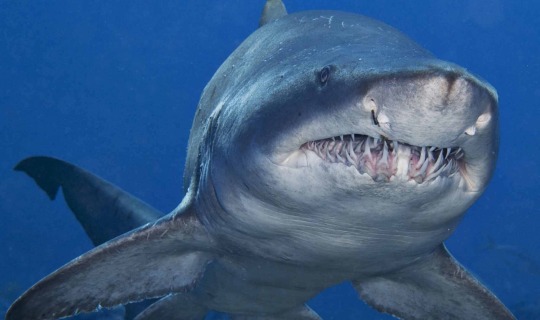
The bull shark, also known as the Zambezi shark in Africa, and Lake Nicaragua shark in Nicaragua, is a requiem shark commonly found worldwide in warm, shallow waters along coasts and in rivers. These sharks can reach 11.5 feet long and can weigh over 500 pounds.
Scientific name: Carcharhinus leucas
#8 : Taimen

Taimen are trout that are found in Mongolia and Russia. These trout are huge. They can grow almost 7 feet long and weigh as much as 230 pounds. however, due to overfishing it's hard to find ones this big anymore.
Scientific name: Hucho taimen
#9 : Nile Perch

The Nile Perch can reach up to 6 feet long and can weigh up to 500 pounds. They are aggressive hunters that can be found in lakes, ponds, rivers and streams throughout the Ethiopian Region of Africa, the Mediterranean Region, the Nile Delta and in the Congo Basin.
Scientific name: Lates niloticus
#10 : Paddlefish
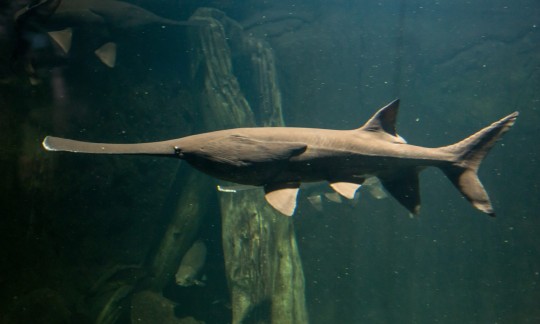
Paddlefish are basal Chondrostean ray-finned fish. They have been referred to as "primitive fish" because they have evolved with few morphological changes since the earliest fossil records of the Late Cretaceous, seventy to seventy-five million years ago. they can grow up to 5 feet long and weigh up to 60 pounds.
Scientific name: Polyodontidae
#paddlefish#fish#big fish#top 10#top 10 list#nile perch#taimen#bull shark#arapima#alligator gar#catfish#big catfish#stingray#white sturgoen#beluga sturgoen
9 notes
·
View notes
Photo

[ID: two column list of types of fish. full list under the cut]
y'all better know how much i love you.
Acipenseridae (sturgeons)
Atherinopsidae (New World silversides)
Catostomidae (suckers)Centrarchidae (sunfishes)
Cichlidae (cichlids)Clupeidae (herrings)
Cobitidae (loaches)Cottidae (sculpins)
Cyprinidae (carps and minnows)
Embiotocidae (surfperches)
Esocidae (pikes)
Fundulidae (topminnows, killifishes)
Gadidae (cods)
Gasterosteidae (sticklebacks)
Gobiidae (gobies)
[column break]
Hiodontidae (mooneyes)
Ictaluridae (North American catfishes)
Lepisosteidae (gars)
Moronidae(temperate basses)
Osmeridae (smelts)
Percidae (perches)
Percopsidae (trout-perches)
Petromyzontidae (lampreys)
Pholidae (gunnels)
Pleuronectidae (righteye flounders)
Poeciliidae (livebearers)
Polyodontidae (paddlefishes)
Salmonidae (trout, salmon, char, whitefish, grayling)
Sciaenidae (drums, croakers)
Umbridae (mudminnows)
#q#mine#click#30th#May#2021#May 30th 2021#dovefeather#research#talk#ref#au notes#4th#June#June 4th 2021
0 notes
Photo

Source of Picture: https://mdc.mo.gov/sites/default/files/media/images/2011/03/paddlefish_swimming.jpg
Animal Type: Paddlefish
The paddlefish got its name from having a paddle-shaped snout. The tail looks like a shark’s tail. The paddlefish usually reaches about five feet in length and weighs about sixty pounds. I thought this was interesting the largest paddlefish weighed about one hundred and ninety-eight pounds. I learned that the male paddlefish is much bigger than the female paddlefish is small. The paddlefish skeleton is made from cartilage and they have a large mouth.
The average lifespan of a paddlefish is about fifty years. They are native to the Ohio River, Lake Erie, and in tributaries. The habitat they are in is low current areas, in different river lakes, below dams, in backwaters, channels, oxbow, and tailwaters. I thought this was interesting about the paddlefish they are highly mobile and about move more than two hundred miles in a river. I learned that the paddlefish is a filter feeder. The paddlefish has a comb like gill rakers that filters water to capture crustaceans or insect larvae that drifts from plankton through the water.
A way a paddlefish can catch its food is having their mouths open wide to filter plankton or large amounts of water. I thought this was interesting if the paddlefish is less than seven or eight inches long they will not develop gill rakers which makes it hard to get large amounts of water or plankton. The way a small paddlefish will catch their food is by capturing plankton one at a time. A paddlefish takes a long time to mature and the paddlefish takes a long time to be capable of spawning. I learned that the male paddlefish is usually ready around seven years and are about forty inches long.
I learned that the genius name for a paddlefish is Polydon. Polydon is a Greek word meaning many teeth which explains the hundreds of gill rakers. The color of a paddlefish is grey to blue-black has a paler underneath. The paddlefish lacks scales and has a deeply forked. The classification of the paddlefish the kingdom is Animalia, the phylum is Chordata, the class is Actinopterygii, the order is Acipenseriformes, the family is Polyodontidae, and the genus is Polydon.
Some other names that are used for the paddlefish is American paddlefish, duckbill cat, Mississippi paddlefish, spoonbill cat, and spadefish. The paddlefish’s paddle-like snout may act like a sensory organ or could help with channel plankton into the mouth. The female paddlefish can lay a huge number of eggs from three hundred thousand to six hundred thousand. The eggs will not have a parental care watching over them so many of the eggs can die.
���
0 notes
Photo

Рыба с носом
Веслонос Polyodon spathula, — представитель отдельного семейства веслоносовых (Polyodontidae) в отряде осетрообразных. Встречается веслонос только на территории Северной Америки в США – в реке Миссисипи и ее притоках (Огайо, Миссури и Иллинойсе), а также в некоторых других реках, впадающих в Мексиканский залив. Раньше веслонос встречался в реках Канады, но в настоящее время этот вид на территории этой страны не сохранился.Узнаем о нем подробнее …
0 notes